|
|
Below we describe the following kinds of forecast text listings that are available in Sirius:
- Aspect Lists
- Lunations, stations, ingresses, planetary hours, etc.
- Medieval: Firdaria, Profections, Primary Directions, etc.
- Hellenistic: Time Lords, etc.
- Vedic: Dasas, Gochara, Muhurta, etc.
- Other Modern Methods: Huber Age Point
As you can see, there are many kinds of forecast text listings available in Sirius. We will describe many of them, but there are so many variations of these listings that we will not describe all of them.
You can click on the images below to see a larger version of the image.
Jupiter-Saturn Hard Aspects
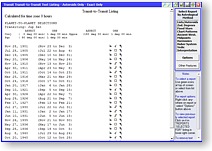
Jupiter-Saturn Hard Aspects
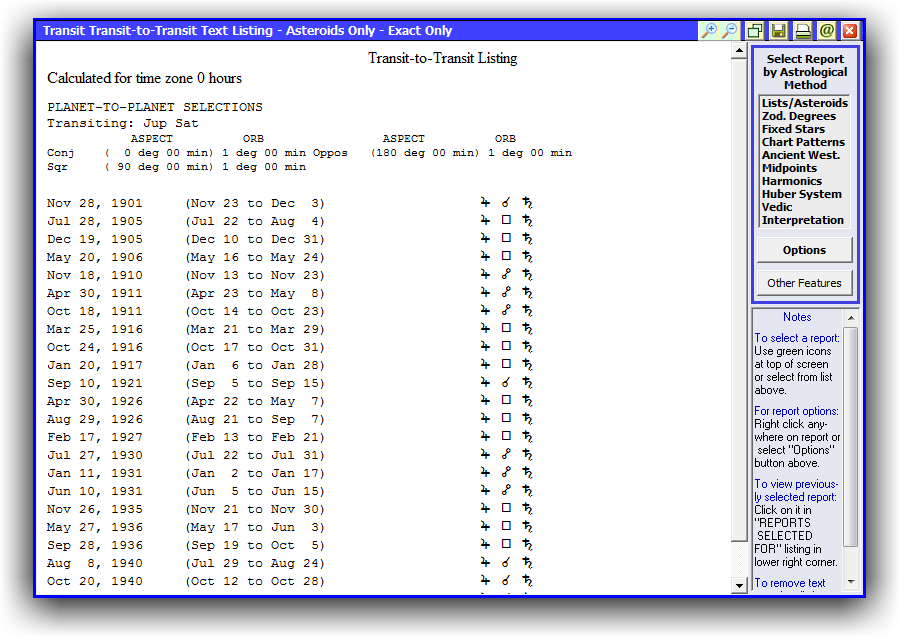
Aspect Lists
Although the Time Line Format is preferred by many astrologers for most forecasting, there are situations where a text listing of aspects is helpful, such as when viewing transits or progressions for a time period of many years. Also, different astrologers have different preferences and some astrologers do use text listings of aspects more often than other astrologers. Suppose, for example, that you are studying historical cycles and you are interested specifically in the times when Jupiter and Saturn are forming hard aspects in the first half of the 20th century. In the first image shown on the right is a listing of this information which was produced by selecting a transit-to-transit text listing and only the planets Jupiter and Saturn and only the conjunction, opposition, and square aspects.
Transit Listing
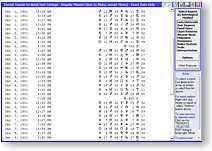
Transit Listing with Planet Positions

The second image shown on the right includes planet positions and the third one is in a table format. These are just a few examples of the kinds of transit-to-transit, transit-to-natal, progressed-to-natal, and progressed-to-progressed listings that are available. The reason why there is so much flexibility allowed in the transit and progressed text listings is because Sirius users have requested these features. Some astrologers and researchers in astrology prefer information to be provided in a particular way and we strive to provide as much flexibility as possible to meet the needs of different people.
Transit Listing in Table Format

Transit Listing in Table Format
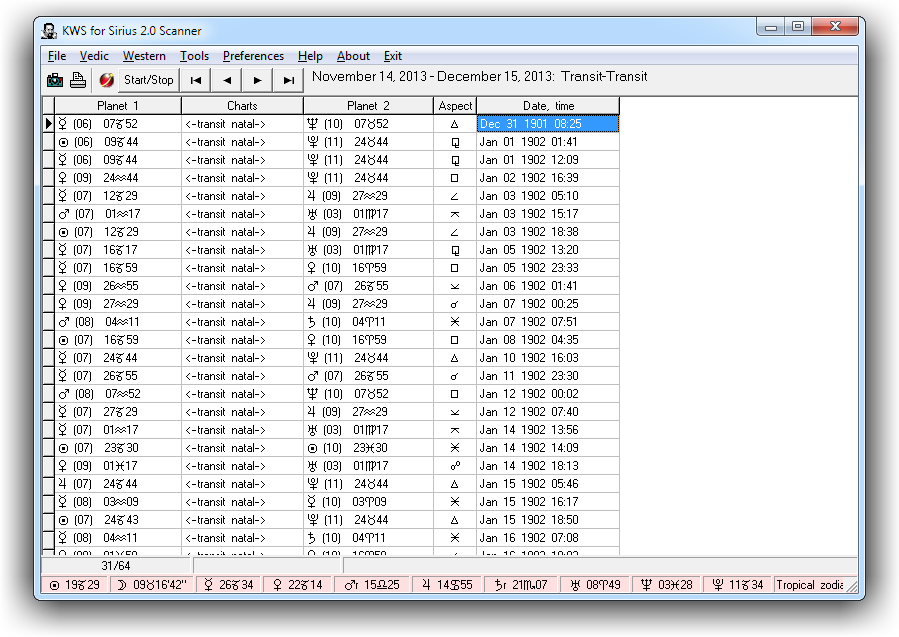
Lunations, stations, ingresses, planetary hours, etc.
Venus Stations
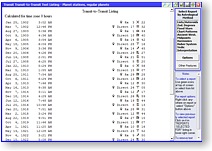
Venus Stations
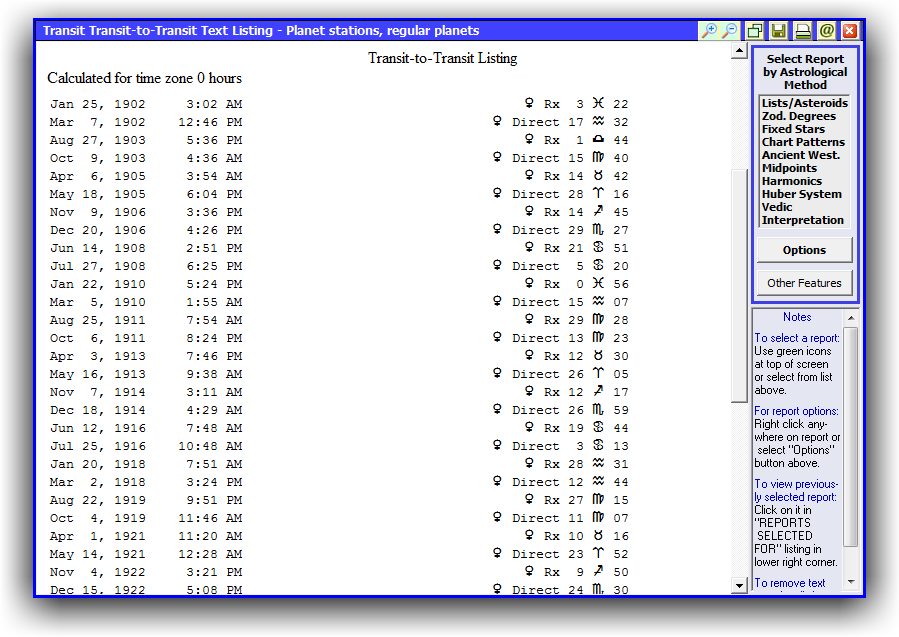
When analyzing trends in political astrology or other mundane affairs or for some reason an astrologer may wish to know when certain astronomical events occur, such as when planets are stationary over a period of time. Shown to the right is an image of times when Venus is stationary. This listing was produced by customizing the default listing by removing all planets except Venus. Another popular listing is the dates when transiting planets ingress into zodiac signs.
A planetary hour table for a particular place is used by many astrologers. The listing is a handy reference so you know when the planetary hours change. Shown to the right is a very helpful listing for many astrologers; you can see both the planetary hour and the rising sign. When the ruler of the rising sign and the planetary hour are the same, the information is listed in blue. For example, we can see that at 12:15 PM Taurus starts to rise and the planetary hour is Venus from 12:15 PM until 12:26 PM when the planetary hour changes to Mars. Thus, for 11 minutes, from 12:15 to 12:26 PM, there is a "double Venus" effect. These times are identified in medieval classic works like the Picatrix as having an especially strong influence of a particular planet.
Planetary hours and Rising Signs

Planetary hours and Rising Signs
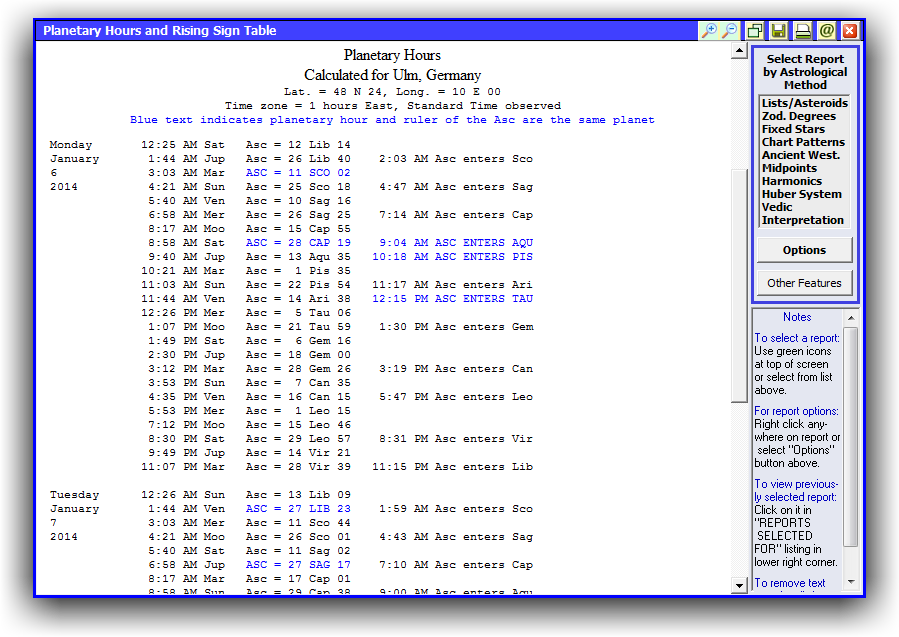
Vedic: Dasas, Gochara, Muhurta, etc.
Vimsottari Dasa Listing

Vimsottari Dasa Listing

Many Vedic forecasting methods are available in Sirius.
In addition to the most common dasa system, Vimsottari dasas, there are 9 other dasa systems: Ashtottari, Drigdasa, Kalachakra, Lagan Kendradi, Narayana, Narayana Shoola, Shoola, Sudasa, and Yogini. You can select the number of levels. Ashtakavarga tables and an ashtakavarga graph are available as well as a Gochara graph. The panchanga forecast tables are very nicely organized and are thorough. A huge number of muhurta tables can be produced and the muhurta tables include graphic images at the top of the report so you can send to clients, post on your website, or publish beautiful and unique muhurta tables. Of course, the technical accuracy is just as professional and carefully developed as the beauty of the reports.
Muhurta

Muhurta for Time for marriage
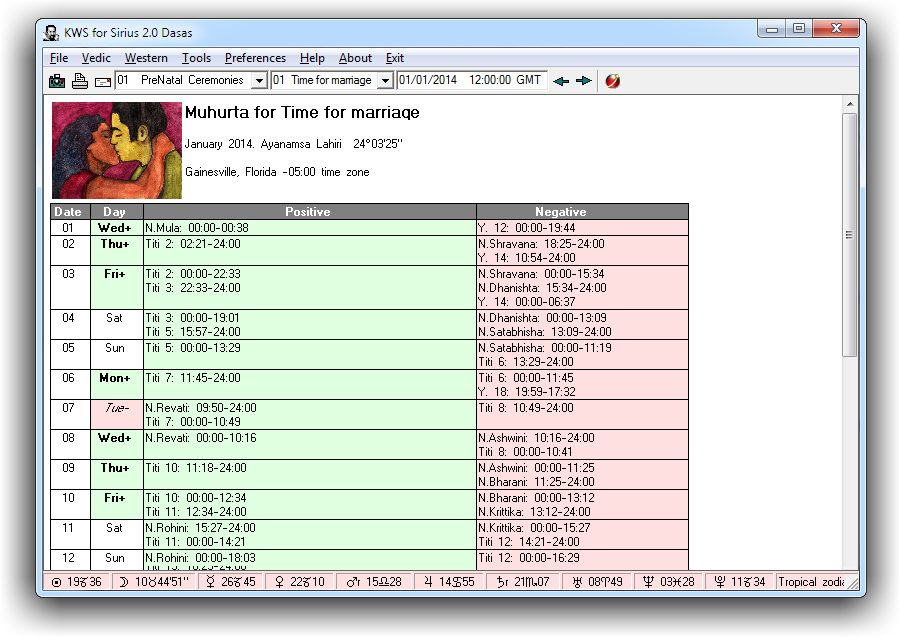
If you click on the images to the right, you will see the attention to detail that is given to each report. The inclusion of lots of technical detail in a nicely organized and clearly readable manner, the use of background colors, and the graphic image at the top of the muhurta tables are examples of how Sirius not only provides the information that you would like to have, but provides it in a very professional and beautiful manner.
Panchanga
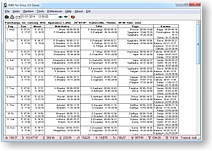
Panchanga
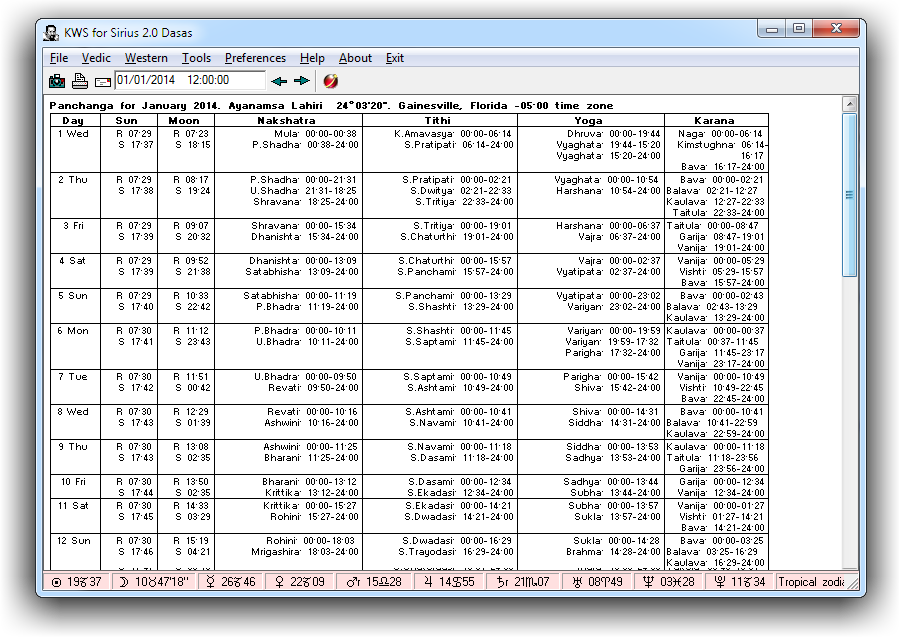
As usual, you can right-click on a report to quickly pull up the settings. For example, while viewing the dasas listing, you can right-click, change the kind of dasa, the number of levels, and any settings that are specific to that kind of dasa, click the OK button and see the new listing. We have also carefully compared and analyzed the results produced by Sirius with authoritative sources. The extreme effort that we put into ensuring that Sirius is technically accurate, flexible, easy-to-use are reasons why astrologers who work with Sirius are invariably impressed and delighted.
|
 Windows 10 / 11 compatible!
Windows 10 / 11 compatible!
 Windows 10 / 11 compatible!
Windows 10 / 11 compatible!

 Windows 10 / 11 compatible!
Windows 10 / 11 compatible!